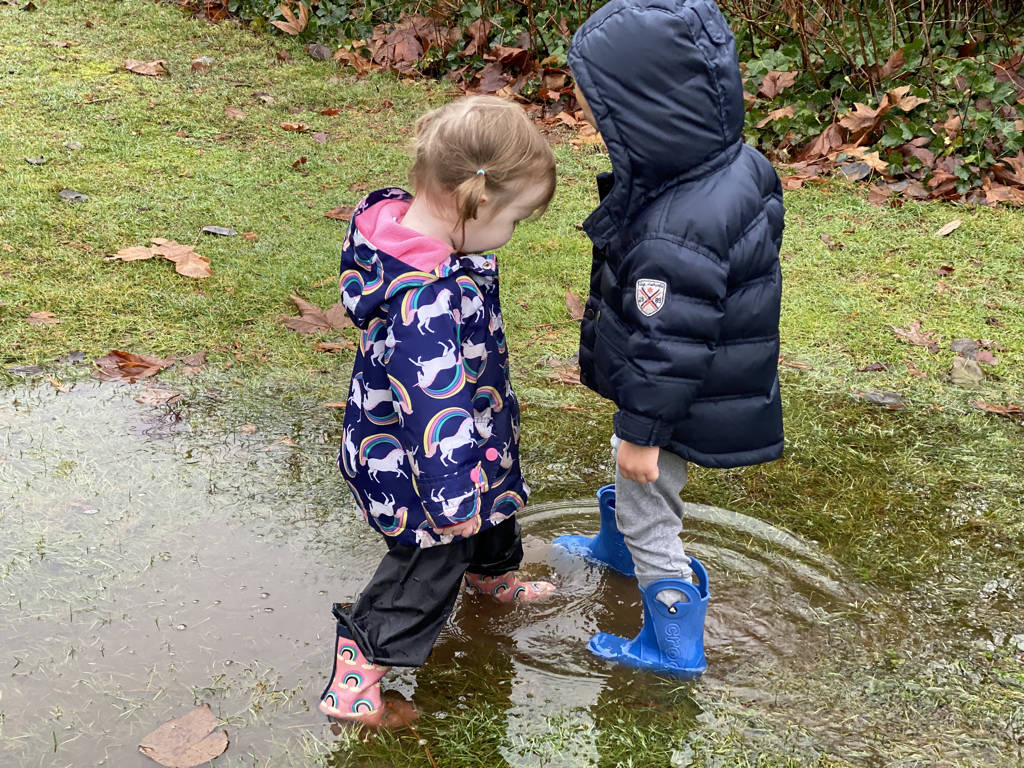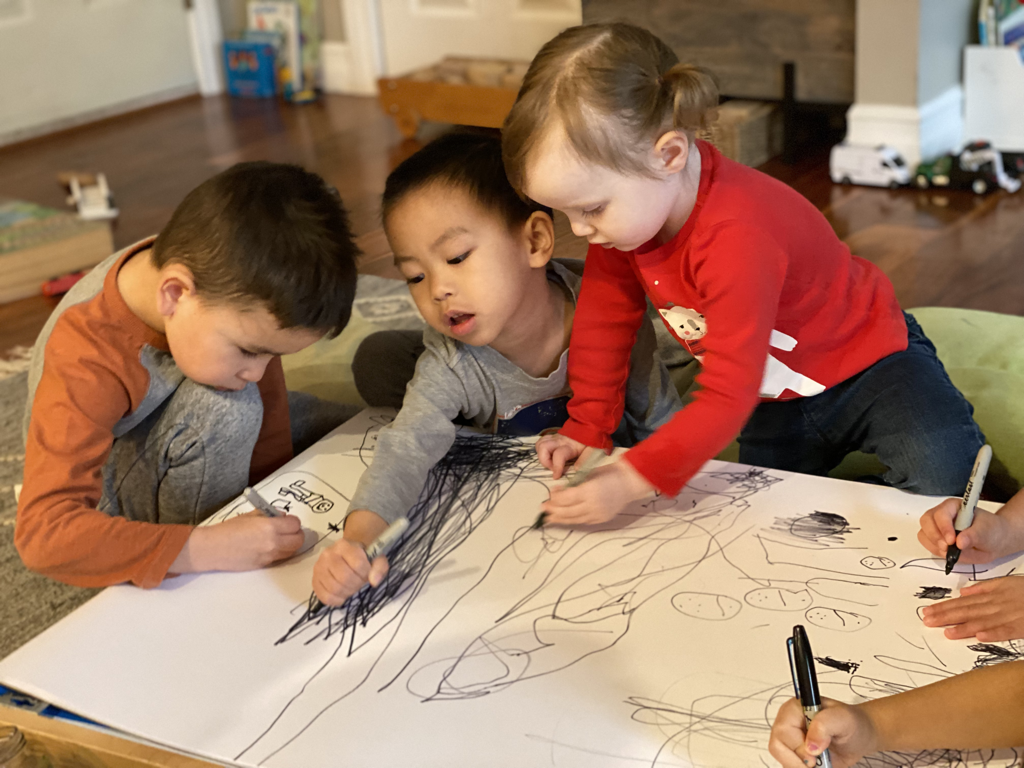|
Drawing has been as a form of meaningful mark to describe a process. This definition is in line with what we want to investigate because we draw purposefully to communicate a message to and about the world around us. It also confirms what we have noted the fact that we use drawing to develop, create. communicate, and record our thoughts. We ask ourselves how the raindrops look like when it rains outside by letting our hands move according to the sound we hear. Nora mentions lines sometimes come in straight and some lines are zig-zags when she expresses the characteristics of sounds. It creates connections between the pitch and lines. If the pitch of the sound goes up, we draw a line that goes up. If it goes down, a line goes down. When we stroll down a trail, we spot a small pool of shimmering water ahead. Fides and Emily immediately quicken our pace and move forward with clear determination. The moment we place our feet into the puddles we find ourselves in a wonderful wet world filled with new opportunities.  Puddles are meant to be splashed in. To do that, we need to jump! Jumping develops balance, strength, and agility. Jumping comes in many different styles: big jumps, little hops, run and jump, jumping with two feet and one-legged hops. As we know rain has many sounds. Listening to rain on the ground and rain falling into a puddle are different experiences. A soft rain also sounds different from a hard rain. Margo develops a sense of rhythm and rhyme which are essential phonemic awareness skills - understanding and playing with the sounds of language. Going back to our inquiry of exploring music and nature. We manage to draw our thoughts about what we remember about sound of the water in the puddle. In Richard Cameron Morneau's words. "The advantage of drawing outside is that you can observe everything in three-dimensional, which you then draw in two-dimensional, and you can work on perspective, which is very important in drawing." As we love nature, we respect our natural world, and we recount the story of our daily adventures and explorations. We become active learners, leaders, and caretakers of our environment. Emily demonstrates her interest by engaging sticks to draw lines on the gravels. When asked, a friend suggests it looks like a trace. Learning about traces becomes another interest of ours. To further extend our comprehensions of traces, we make connections to a storytelling. We believe by exploring objects during play, we figure out how things work and develop problem- solving skills. Through this dramatization, Nora concludes our storytelling by making connection with our comprehension of traces. We explore the next possibility of traces by making a point to leaving shells on our way to go into the park. Felix and Lukah take turns to leave one at a time at every nook and corner.  On the way out, we ensure we collect each shell to bring them back with us. Learning about traces enables us to understand the connections between our journey and the process being visible and connected.  Kindest,
Children & Friends.
0 Comments
Leave a Reply. |
No part of this publication may be reproduced, distributed, or transmitted in any form or by any means, including photocopying, recording or any other electronic or mechanical methods, without the prior written permission of the publisher.
Archives
July 2024
|

